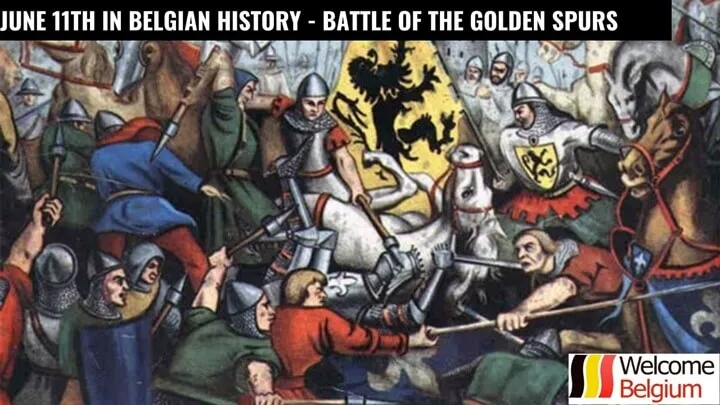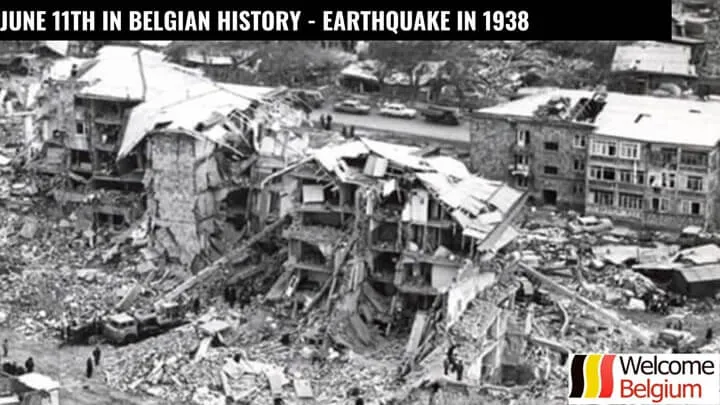What happened in Belgian history on this day – June 11th. Description of interesting events and facts.
[lwptoc]Battle of the Golden Spurs
Every year on July 11, Belgium celebrates the Flemish Community Day, which is called Feast Day of the Flemish Community. The basis for this was an event important for the history of the country.
On July 11, 1302, the Battle of Courtrai, also known as the Battle of the Golden Spurs, took place. In Dutch it is called De Guldensporenslag, fr. bataille des eperons d’or. This battle pitted Flemish rebels against the French army near the city of Kortrijk.
The French troops, consisting of feudal militias, Lombard crossbowmen and javelin throwers – Spanish mercenaries, were led by the Count d’Artois, a relative of the king. They fielded 7.5 thousand cavalry and from three to five thousand mercenary infantry.
The Flemish city militia numbered from 13 to 20 thousand fighters, among whom there were only 10 knights – commanders and their retinue. The rest were infantry, armed with bows, crossbows, pikes, godendags and clubs.
The Flemings were victorious by collecting 700 pairs of golden spurs from the bodies of the French knights, which is how the battle got its name. However, this victory did not stop the ambitions of the French kings, and for almost a century they tried to subjugate Flanders.
Today, July 11th is celebrated in Belgium as the Day of the Flemish Community. On this day, processions are held in which people in national costumes perform scenes from this historical event. A theatrical performance re-enacting the events of the battle is held annually in Courtray.
General elections in 1850
Partial general elections in Belgium took place on 11 June 1850. The Liberal Party won these elections to the House of Representatives, winning 69 of the 108 seats. Voter turnout was 69.1%, although only 40,435 people were eligible to vote.
Under the rotating system, elections were held in only five of the nine provinces: Antwerp, Brabant, Luxembourg, Namur and West Flanders.
Earthquake in 1938
This earthquake was studied by O. Somville, Head of the Belgian Seismological Service
(Annales de l’Obsen·atoire Royal de Belgique). On June 2, 1938, at noon, an earthquake occurred in Belgium – Northern France, Holland, North West Germany, Luxembourg and southeast England.
the Ierculli-Cancani scale, in the central part the shock reached intensity VII.
In Belgium, where it was strongest, tectonic plates shifted.
At the Belgian Observatory in Uccle Fichert, most of the instruments and instruments were damaged. Although the distance to the epicenter of the earthquake was 50-60 km. It was located between Odenourde and Renuis, west of Uccle.
17,550 chimneys were damaged, of which more than 3,000 were damaged in Courtray alone. Several people were slightly injured.





